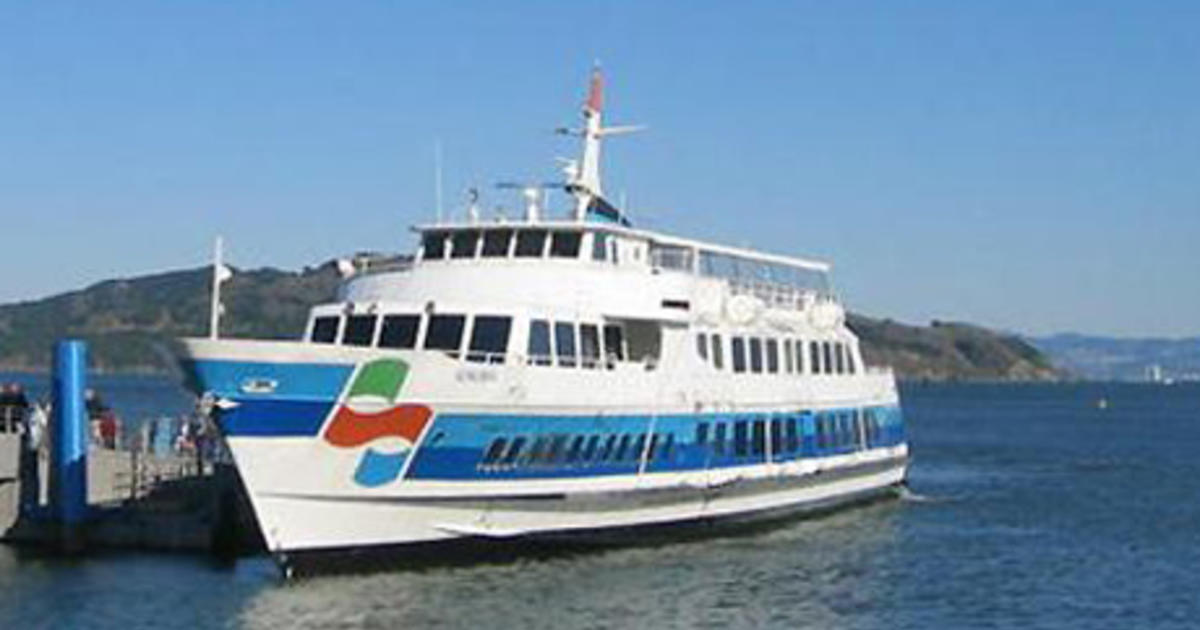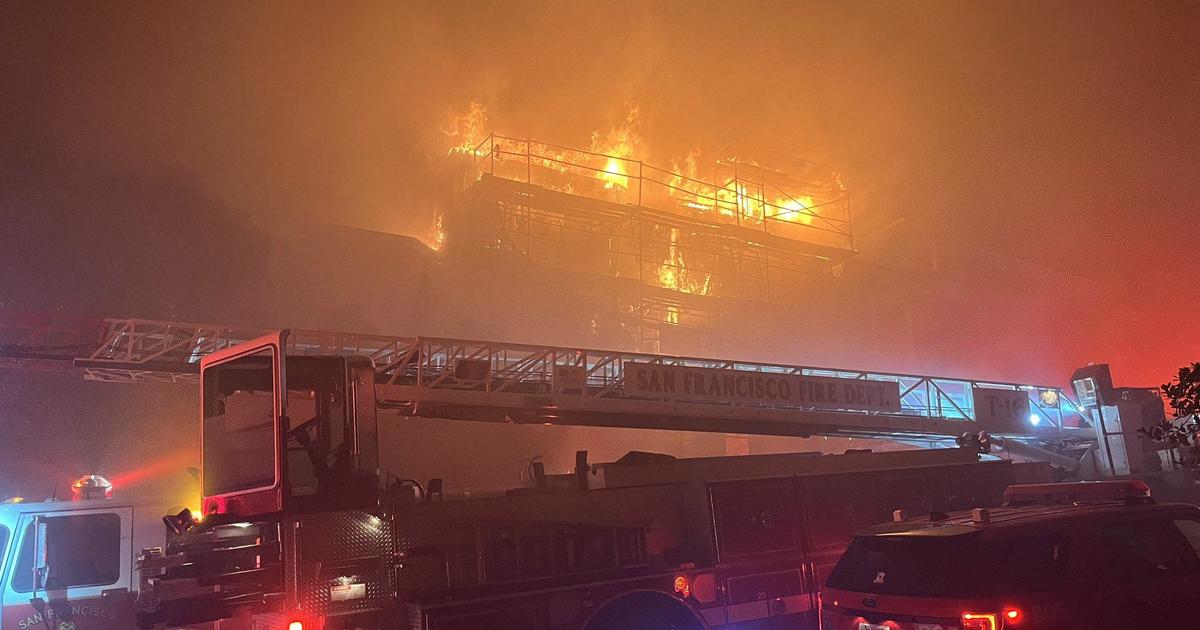UPDATE: San Francisco Moves To COVID-19 Red Tier; Indoor Dining To Resume At 25% Capacity
SAN FRANCISCO (CBS SF/AP) — With new cases of COVID-19 plunging, San Francisco health officials announced that the city was moving into the state's Red Tier, allowing struggling restaurants to offer indoor dining for the first time in months.
At a Tuesday news conference, Mayor London Breed called the reopenings the "beginning of a great time for San Francisco."
UPDATE: San Francisco Bar, Restaurant Owners Cautiously Optimistic About Move To Red Tier
"We're here, we are in the Red," Breed said. "Now I know being in the Red doesn't sound that great but it is great compared to where we were...It means this is just the beginning. This is the beginning of a new day for San Francisco."
She said that the city within the next three weeks would move into the even more lenient Orange Tier. Breed also promised that San Francisco's iconic cable cars would return to operation before the end of the year.
With some exceptions, San Francisco's reopenings are in alignment with the activities allowed by the state. Napa County and Santa Clara County also announced Tuesday that they were moving into the Red Tier.
Additionally, San Francisco will now allow groups of up to six people from three households to eat together outdoors and the city has lifted the 10 p.m. curfew.
Businesses can begin with indoor reopenings at 8 a.m. Several restaurants including Waterbar and EPIC Steak on San Francisco's Embarcadero have already announced they would be open for indoor dining on Wednesday.
For counties in the Red Tier, indoor restaurant dining rooms and movie theaters can reopen at 25% capacity or up to 100 people, whichever is fewer. Gyms and dance and yoga studios can open at 10% capacity. Museums, zoos and aquariums can open indoor activities at 25% capacity.
The last time the city moved into the Red Tier was in the fall. Then came the post-Thanksgiving surge of new cases, forcing many reopened businesses to shut down indoor operations in December, January and February.
"Nearly a year after our shelter in place order, thanks to our collective actions and commitment to following the health guidelines, we have come through our worst surge since the beginning of the pandemic," said Dr. Grant Colfax, the city's health director. "We know how to slow the spread and save lives."
The move to the Red Tier comes as the CDC is asking states not to reopen. Recent health metrics in San Francisco have allowed the county to move into the less restrictive tier, but nationwide, the clear downward trajectory in case rates and COVID deaths in recent weeks has plateaued.
That is prompting the Centers for Disease Control and Prevention to issue a warning not to loosen restrictions yet.
The concern is another surge. Health experts are warning states not to ease restrictions too much over the possibility cases could rise again due to variants, wiping out the gains the gains that have been made.
"San Francisco was the first major city to shut down, and we've been extremely conservative about every decision we make," said Breed.
Scientists say one of the COVID-19 variants, B.1.1.7. is about 50% more transmissible.
""Nationally, cases have started to rise slightly. This is why we need to double down on prevention measures," Colfax admitted. "There is a growing presence of more variants in our region."
Outdoor gatherings can continue past 10 p.m. Indoor dining will limit tables to one household with a maximum of 4 people. If dining outdoors in San Francisco, 6 people are allowed from 3 households in a group.
"Be aware there are going to be different restrictions for indoor and outdoors," said Laurie Thomas of the Golden Gate Restaurant Association.
"We have to balance the risk of reopening and where we are with the fact we've been in this for a year. I think we are in a place where we can engage safely in some of these activities," said Colfax.
Several counties in the San Francisco Bay Area issued a strict-stay-at-home order nearly a year ago, in advance of a statewide shutdown. Public health officials for the most part have been more cautious than peers in southern California and in other states about reopening the economy.
Business activity in San Francisco shut down in early December after several Bay Area counties pre-emptively went into lockdown as the positivity rate surged and the rate of cases climbed. Outdoor dining, outdoor museums and some indoor and outdoor personal services reopened in late January after the state called off its regional stay-home order.
The economic toll has been grim, with rents for apartments and offices plummeting as downtown eateries that once fed throngs of hungry office-workers and tourists at lunch struggled.
A majority of California's 58 counties remain in the state's most restricted Purple Tier of a four-tier color-coded system, although San Francisco, Napa and Santa Clara counties moved into the less restrictive Red Tier on Tuesday.
The following activities may be reopened:
Indoor dining and food courts
Indoor dining at restaurants, bars serving meals, cafes and coffee shops, hotels, museums, and food courts in shopping malls may open at up to the lesser of 25% maximum occupancy or 100 people. San Francisco will limit indoor dining tables to members of one household up to a maximum of four people and require indoor service to end by 10:00pm.
Indoor and outdoor personal services
Personal services that require mask removal can take place outdoors and the service provider wears an N95 or other well-fitted mask. Personal services that require mask removal can occur indoors if the service is provided at least 6 feet away from others and preferably in a separate room and the service provider wears an N95 or other well-fitted mask.
Indoor fitness
Gyms and climbing walls may reopen indoors at up to 10% capacity.
Gentle indoor fitness classes such as stretching, yoga and meditation may operate within indoor fitness guidelines. Indoor locker rooms and showers remain closed at this time. Indoor saunas, steam rooms and hot tubs remain closed per State rules.
Indoor museums, zoos, and aquariums
Indoor museums, zoos and aquariums can open at up to 25% capacity with an approved safety plan.
Indoor funerals
Funerals may take place indoors up to up to 25% capacity. Simultaneous indoor and outdoor services may not take place.
Indoor political demonstrations
Political demonstrations may take place indoors up to 25% of maximum capacity.
Schools
Middle schools and high schools that had not yet reopened may resume reopening for in-person instruction with a COVID-19 Safety Plan approved by the Health Officer. Elementary schools may continue to reopen, as has been the case.
Outdoor stand-alone amusement rides
Outdoor stand-alone amusement rides like Ferris wheels, carousels, and train rides will open. Only one household can inhabit each separate space, such as a Ferris wheel cabin or train car.
Indoor movie theaters
Indoor movie theaters may open at up to the lesser of 25% or 100 people capacity, but without food or beverage concessions. If there are multiple auditoriums, each auditorium is limited to the lesser of 25% or 100 people provided the complex as a whole does not exceed 25% capacity.
Indoor pools
Indoor swimming pools may open up to 25% capacity but only for basic swimming and drowning-prevention classes for children. Outdoor pools remain open for broader uses.
The following activities may expand their operating capacity:
Outdoor gatherings
Small outdoor gatherings of up to 12 people from three households can continue. Outdoor gatherings that involve food and drink may expand to up to six people from three households.
Outdoor dining
Outdoor dining will expand from members of two households up to six people, to members of three households up to six people per table, and will remove the requirement that service end by10:00 pm.
Additionally, for those businesses that had constructed barriers between tables in lieu of distancing before December 6, those barriers can remain. New barriers intended to replace the required 6 feet of distancing may not be constructed.
Hotels and other lodging facilities
Hotels and lodging facilities can open dining and fitness facilities in accordance with guidelines. Though San Francisco's travel quarantine for travelers from outside the Bay Area has lifted, the State's travel advisory requiring that non-essential travelers from out of state or beyond 120 miles quarantine for 10 days remains.
Drive-in venues
Live entertainment with up to six performers can open in a drive in context of up to 100 cars, with one household per car. In-person ordering or pick up of concessions may open if in a designated area with customer metering and eating or drinking in vehicles only.
Real estate
Real estate showings must occur virtually or, if a virtual viewing is not feasible, by appointment without limits to the number of people viewing or showing the property. Open houses are not permitted at this time.
Outdoor youth programs and out of school time programs
Out of school time programs for school-aged children and youth such as Community Hubs, youth sports, and afterschool programs, may increase outdoor cohorts to 25 children or youth. Youth may only participate in one program at a time.
Higher education and adult education
In-person classes at institutes of higher education, vocational education and adult education can take place outdoors up to 25 students. If specialized equipment is required, classes can take place indoors at 25% capacity or if for a core essential service, without a capacity limit as long as 6-foot physical distancing can be maintained. No indoor lecture classes may take place.
Outdoor recreation
Doubles tennis and doubles pickleball can resume with members of up to four households. Up to 12 people from three households may pursue outdoor low, moderate, or high contact sports. If part of a supervised youth or adult league or club, outdoor moderate and high contact sports such as softball, field hockey, and gymnastics, as well as football, basketball, and soccer may resume for stable groups of up to 25 per team, following DPH safety precautions.
Competitions may only occur in county or with teams from adjacent counties (Marin, San Mateo, and Alameda) in an equal or less restrictive tier. Consistent with State guidelines, travel for out-of-state tournaments may not take place.
Kenny Choi contributed to this story.



